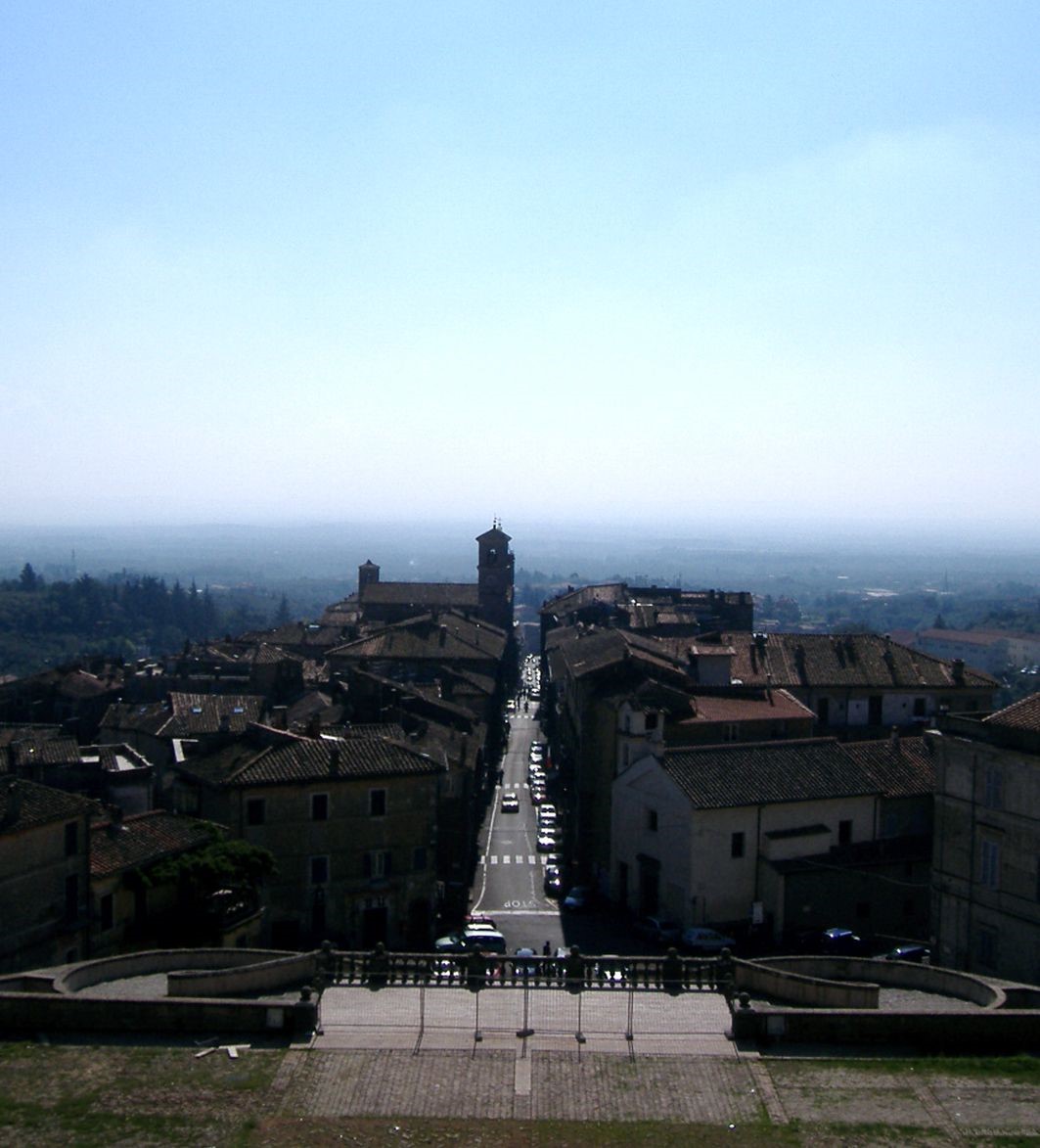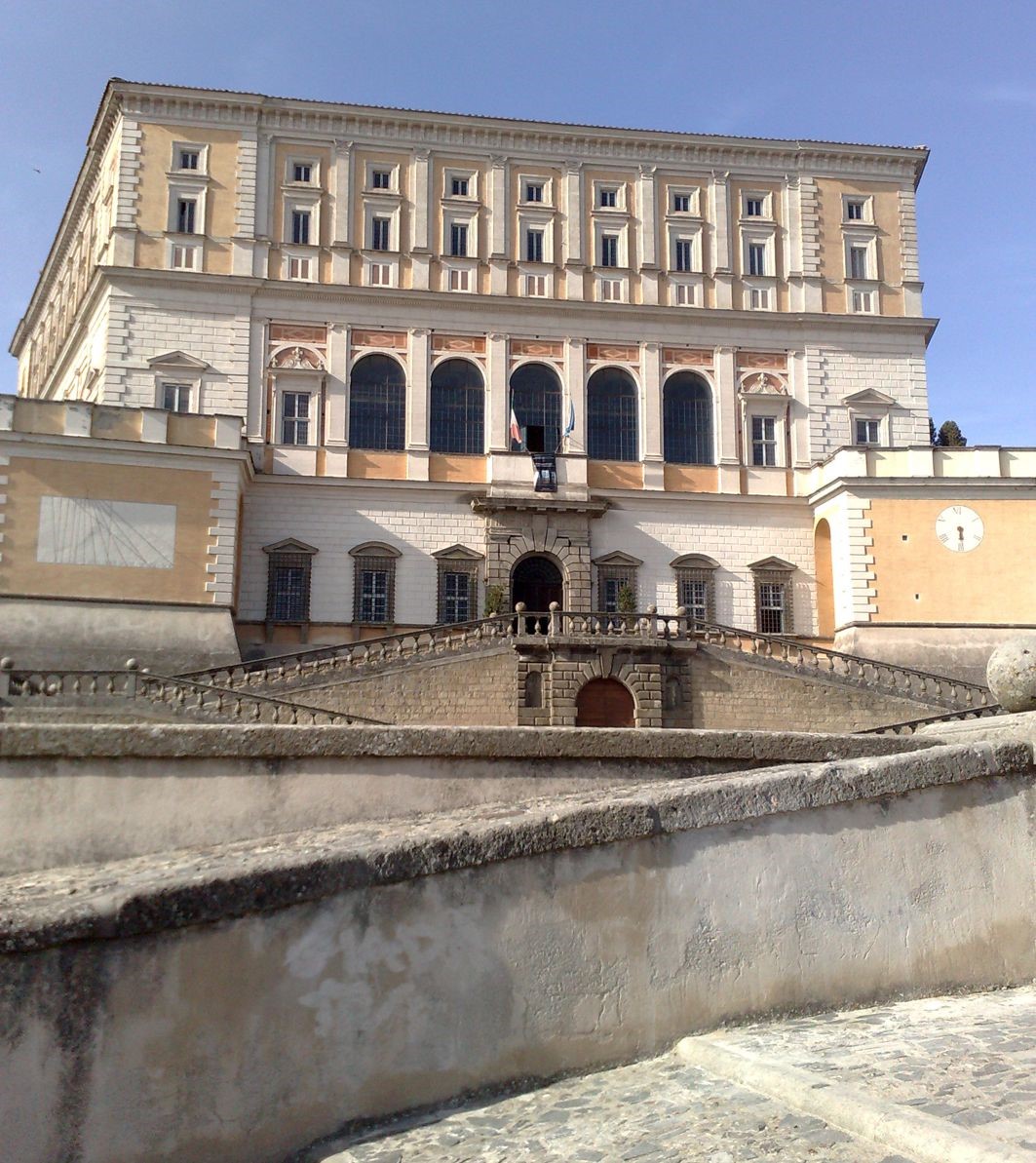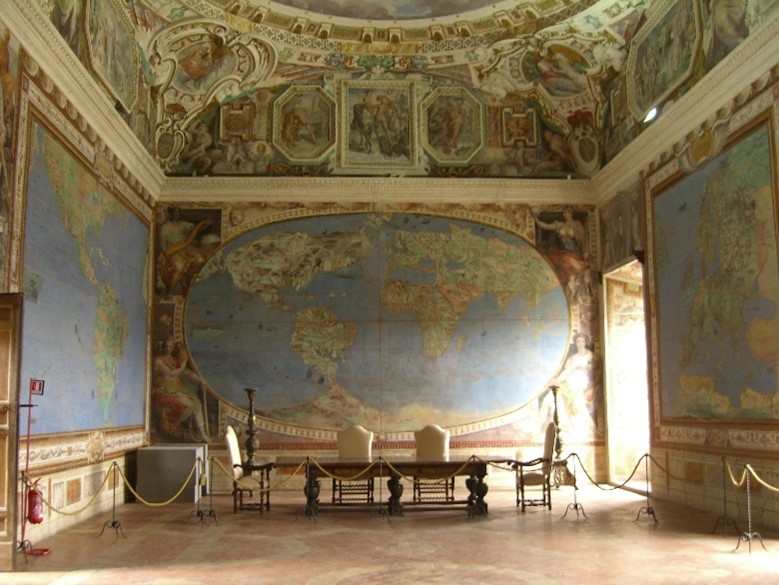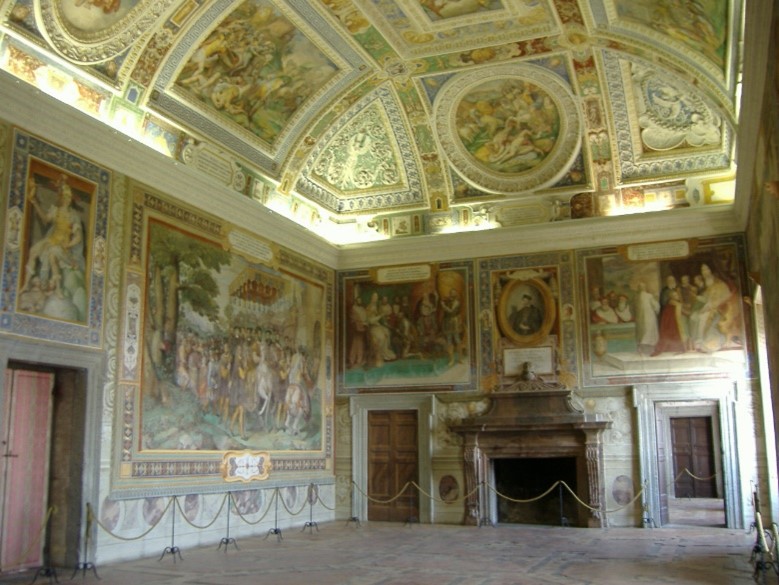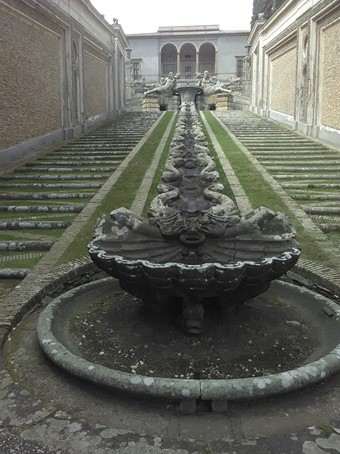My Best Tour Cooperativa & The Fun Way Travel Agency
Operations, Via Santamaura, 9 – 00192 Roma
Tel +39 06 9432 9438 – Tel/Fax+39 06 9432 9439
Caprarola
Approximately 60 kilometers (40 miles) north-west of Rome, this lovely little town is in the heart of Tuscia, so maybe we should spend a few words on this latter before talking about the town of Caprarola. Tuscia is a geographical area north of Rome that comprises those territories that were once under Etruscan influence and which the Romans called Etruria. Tuscia is the southern part of Etruria and it sort of coincides with today’s province of Viterbo. Etruria was originally very large and it included the whole region of Tuscany, part of Umbria and northern Lazio. The Farnese Palace is the main attraction in Caprarola and made this small town famous worldwide. Considered one of the finest examples of a Renaissance palaces in Italy, it was built in a pentagonal shape as the original intention was to build a fortress, yet the plan changed during the construction and a lavish palace was built instead. The Villa Farnese is situated right above Caprarola in a dominating position. This massive Renaissance and Mannerist construction, opens onto the Monti Cimini, a range of densely wooded volcanic hills.
The construction of what initially was to be a fortress, began under Pope Paul III, who entrusted it to the architects Antonio da Sangallo the Younger and Baldassare Peruzzi. Subsequently, Cardinal Alessandro Farnese, nephew of Pope Paul III, decided to transform this partly built fortress into a villa.
He chose the architect Giacomo Barozzi da Vignola (better known simply as “Il Vignola”) for this transformation. Works commenced in 1559 and Vignola worked on the villa until he died in 1573. With the ascent to the papal throne of Julius III who opposed the Farnese family, Cardinal Alessandro decided it was best to flee Rome and moved to Caprarola. Far enough from Rome to be safe, yet not too far. The villa is one of the finest examples of Renaissance architecture in Italy. However, the ornaments are not exaggerated, but harmonious and proportionate. The style of the villa is different from the usual Renaissance style of the previous twenty years. This new, more austere style is known as Mannerism. The inside was beautifully decorated with frescoes by Taddeo and Federico Zuccari, Antonio Tempesta, Giacomo Zanguidi (aka il Bertoia), Raffaellino da Reggio, Giacomo del Duca, and Giovanni De Vecchi.
The subject of the frescoes varies from room to room, from the beautiful spiral staircase to the corridors.
We pass from the story of Alexander the Great to the Sala dei Fasti Farnesiani (the Room of Farnese Deeds), which celebrates the glory of the Farnese, to the “Sala del Mappamondo” (Room of the World Map) where, exposed on the walls, is the whole world as they believed it was in 1574.
Such an imposing building could not be missing in equally imposing gardens. The villa is accompanied by a significant example of Italian Renaissance gardens adorned with fountains, water games, sculptures, and boxwood mazes.
The original idea of building a fortress wasn’t totally forgotten, and so the building is surrounded by a moat surmountable by three drawbridges.
Two gardens, cut into the hill, face two of the building’s facades and can be accessed from the apartments on the piano nobile by a drawbridge.
Walking through the chestnut woods beyond, one reaches the giardino segreto, (secret garden), with its well-known casino.
The Casino is a small habitable summerhouse with two loggie for “al fresco” (in the fresh air) dining .
Probably designed by Giacomo del Duca, with later interventions in the surrounding area by Girolamo Rainaldi. The casino can be reached by stairs between grotto walls, with a central cascaded rill, or ‘water-staircase’.
Statues of river gods are at the top of the steps either side of a large central vase fountain. Finally, north of the casino, you find a private rose garden.
Villa Farnese was used as film location in many movies and TV series, such as Medici: Masters of Florence, The Man From Uncle, Luther and The Two Popes.
An excursion in Tuscia to visit Caprarola, and other marvels in this area, is highly recommended to those who spend a few days in Rome, but also to those who sail a cruise ship and dock in Civitavecchia if they have visited Rome already and they don’t feel like visiting it again. Caprarola is located about 40 miles from both Rome and the port of Civitavecchia. The journey from either location is truly scenic and enjoyable, lots to see, hardly any traffic and beautiful scenery. The other interesting places that can be visited on this excursion. Traveling from Rome to Tuscia, a stop can be made in the small characteristic town of San Martino al Cimino, with its Cistercian Abbey and a drive by beautiful Lake Vico would be a pleasant detour plus, time permitting, one could stop in the town of Sutri, to admire the Roman ruins. Every town in Italy has its own typical foods and wines, all worth trying, and you’ll be able to enjoy a nice, typical, Italian lunch with local specialties in any of the above mentioned places! If you’re traveling to Tuscia from Civitavecchia instead, you can still visit the above mentioned places but, in addition, you could stop to stroll around the Etruscan town of Tarquinia on the way back to the port, if you should still have enough time and energy left of course!

